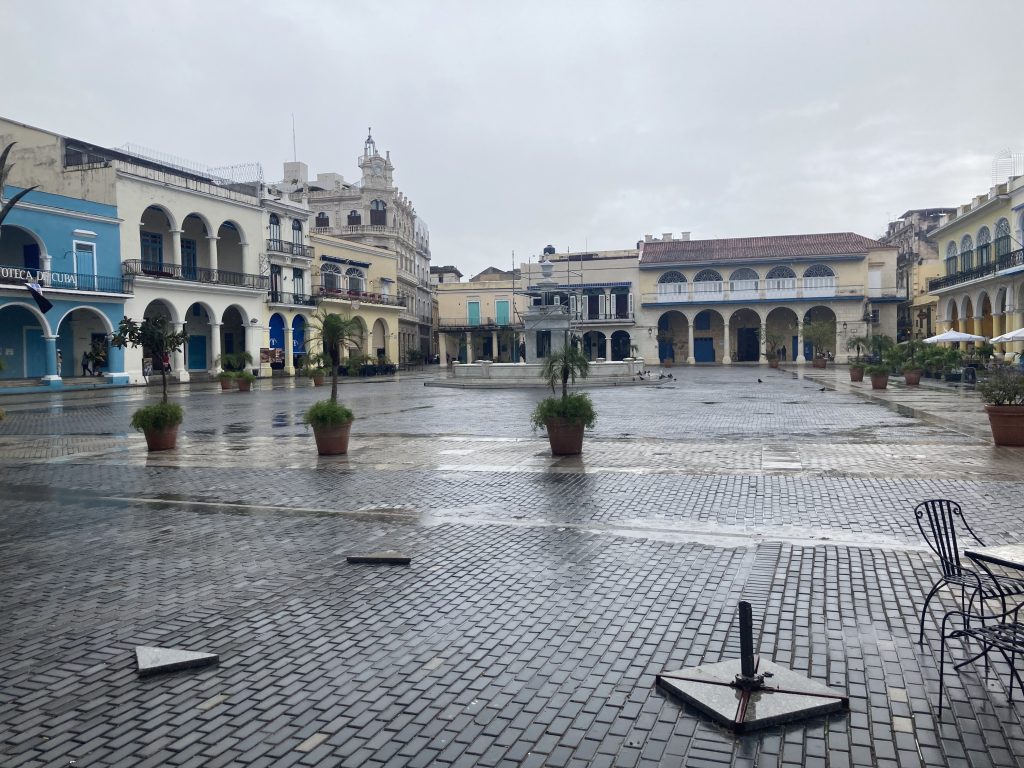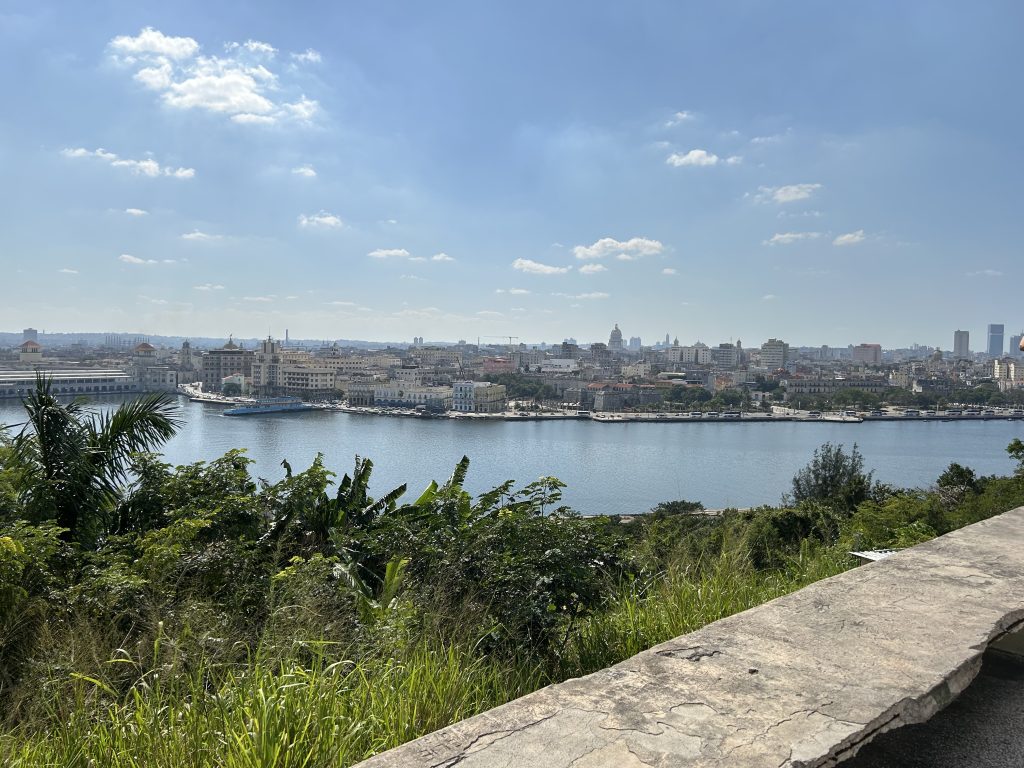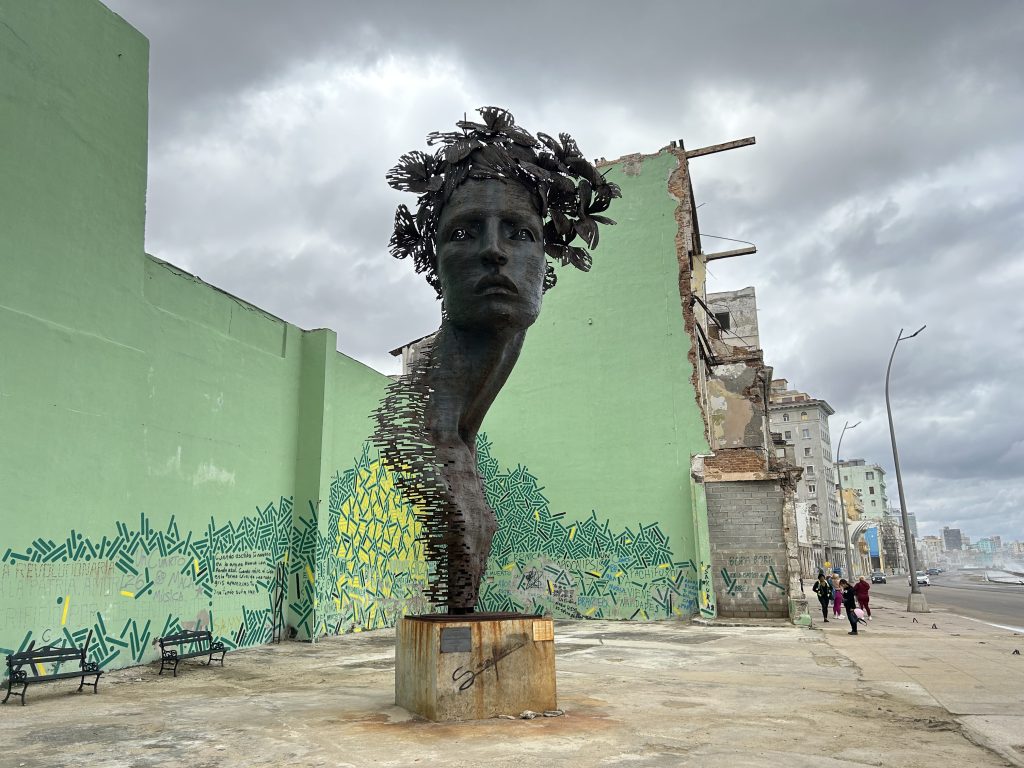As an historian of Latin America, my work long focused on Mexico, the country of my birth and the place where I spent my childhood. After completing my second monograph however, I began a research project on Cuban medical internationalism, an effort to understand the significance of the over 600,000 doctors Cuba has sent to treat patients in 165 countries over the past 60 years. As part of my research, I spent this past January in Cuba, visiting hospitals, speaking to doctors, clinicians and medical professors, and reading bound, dusty newspapers whose fraying edges left a visible trail of my work on the table and floor of the National Library.
When not working, I spent much of my time exploring the city on foot, an activity especially pleasant in January when temperatures hardly creep above the mid-70s. My meandering walks took me from Vedado, the tree-lined residential neighborhood where I stayed, through the thickly populated center of Havana where 1980s-model Russian cars, almendrones (1950s Chevies used for collective transport) and electric scooters speed by. As one approaches old Havana, the colonial architecture, bright colors, cobblestone streets and souvenir shops are not unlike other Latin American cities. But Havana’s music, food, and ocean breeze are distinctly Caribbean. There is a vibrancy, warmth and joy to the environment, even as there are some notably empty establishments, visible signs of a tourist industry that has not recovered from pre-pandemic levels.
My favorite part of these long, meandering walks was returning by way of the malecón, the walkway that runs along the water where the restless ocean pounds the stone wall, at times producing dramatic waves that crest several feet in the air and drench sidewalk, street, and anyone along them.

I’m tempted to say that it was the sound of the ocean that made these walks therapeutic. In some ways it was. But more than that, it was the utter lack of commercial advertising that, these days, is unheard of in urban spaces. The overpowering flashing lights and billboards, the scripted, ebullient voices on screens and speakers selling you a lifestyle you won’t achieve or a product you don’t need, the towering malls now ubiquitous in our modern world, are absent in Cuba. It is a welcome respite for the soul and the senses.
Cuba is not, as some may claim, a land frozen in time – despite the 1950s Chevrolets that have become such an iconic representation of Havana imagery. As in other places, there are people glued to their cell phones, electric vehicles occasionally whiz by, and the towering hotel buildings are indistinguishable from those in other tourist sites. But there is a precarity and simplicity to the way things are done, one that puts in sharp relief the wasteful nature of our lifestyle in the land of plenty. Cuba, according to some studies, ranks among the top 10 nations in the sustainable development index as it has a high human development with a low ecological footprint.
The island’s current economic crisis threatens this high human development. The signs of hard times are everywhere: high food prices, long fuel lines, empty pharmacy shelves, blackouts, and infrastructure in visible disarray. Daily life is hard, very hard, people tell you. Triggered by the pandemic which shut down tourism – a key source of capital – and locked in place by a barrage of sanctions imposed by the first Trump administration (and maintained by Biden) the Cuban economy has been unable to recover. People spoke to me openly, and, in typical Cuban fashion, passionately, about the difficulties of the current moment. Perspectives came from across the political spectrum: from those wholly dissatisfied with their government, to those expressing constructive criticism, to those hailing the revolutionary project. Not a single one of them thought their situation would improve through continued Washington-based sanctions. On the contrary, all anticipated even harsher times knowing the incoming administration would harden US policy towards Cuba. This reality was quickly born out when, on day one, Trump overturned Biden’s last-minute removal of Cuba from the US-designated State Sponsor of Terrorism list. Secretary of State Marco Rubio’s new measures prohibit Western Union from processing wire transfers to Cuba and sanction officials in other countries who collaborate with the island’s international medical missions.

In the context of such difficulties, it was moving to experience the annual Marcha de las antorchas (The March of the Torches), a visually striking and joyful celebration of the birth of José Martí, the poet, essayist, journalist, children’s writer, and revolutionary who died on the battleground fighting for independence from Spain in the 1890s. During his lifetime, Martí traveled the American continent (north and south) denouncing colonial domination, warning of the threat of imperialism and urging for a multi-racial coalition to fight for self-determination.
Every year, on January 27th thousands gather in the late afternoon at the University of Havana to honor Martí’s memory and celebrate his example. By the time dusk takes hold, the university steps and the street to which its passage descends, is spilling over with students, families, and contingencies from various organizations. Music playing on loudspeakers adds to the festive mood. Many come with their own makeshift torches – an empty food can with a flammable cloth atop a wooden stick – but most pick these up from the vast piles already there. I was told that in the days leading up to the march youngsters across school grades are charged with bringing one such homemade torch, which are then gathered and handed out to attendees. Knowing from the previous year’s celebration how crowded the event gets, I arrived early to secure a good spot. Coincidentally, as in the previous year, I found myself next to the contingency from the Latin American School of Medicine, the 25-year-old medical school that has graduated thousands of doctors from the global south. These international students carried flags from their homelands – including Palestine – a way to honor, I thought, Martí’s internationalist yearnings. Once darkness fell and student leaders had pronounced some brief speeches, a specified signal began the lighting of the torches. The line of fire gradually grew into a stunning orange river of lights flowing along the designated avenue and winding its way to malecón.
The following day, next to the National Library where I conducted my daily archival work, Martí’s commemoration had children at its center. The spectacle of lights of the previous night was matched by a spectacle of color as elementary and junior high school students who, in their iconic red and blue uniforms carried flags, flowers, and wreaths to the towering statue of Martí in the Plaza of the Revolution. This vast, open space is Cuba’s administrative center and the surrounding government buildings have giant steel murals of revolutionary heroes Ernesto Che Guevara and Camilo Cienfuegos.

On my last day in Havana, a taxi driver, astounded by how much time I had spent doing “library work” and had seen next to none of the attractions he listed off, urged me to at least let him take me to the Christ of Havana. Dismayed, once again, that I did not know what that was, he explained that it was a statue located on a hilltop across the bay that would give me the most beautiful view of the city. Once across the water, the panoramic view – its historic fortress, capital building, hotels and malecón, all against a clear blue sky – indeed proved stunning. “Oh, and by the way,” he commented as we arrived at the hilltop, “that’s Che Guevara’s house over there.” The residence of the guerrilla leader and former economic minister had been turned into a museum where visitors could see the office where he met with dignitaries; as well as view numerous historical artifacts, and read an account of his expeditions.
I conversed at length with the driver about Mexico, about the US, about the difficult times in Cuba. “But there’s no violence here,” he kept emphasizing. Indeed, amid otherwise woeful outlooks, this fact emerged time and again in different ways. When I reflect on my visits there, that fact, along with the absence of pervasive advertising, stand out. The lack of violence in the island allows for acts unthinkable in other parts of the Americas, like walking alone at night or having children play outdoors without supervision.
Such public safety has held despite the current crisis. While there has been an increase in petty theft, violence as we know it in the rest of the Americas, including the US, is non-existent. When interviewing Cuban doctors, one of the experiences they recount is the novelty of treating gunshot wounds abroad, “It’s just something you don’t have in Cuba,” they explain.
Heading back to the taxi from the Che Museum the driver and I walked across a small park. A man sleeping on a bench would probably have remained unnoticed by both of us but for the fact that the parking attendant was running toward him and shouting something with a sense of urgency. I assumed, of course, it was to reprimand him for making a public bench his resting place. Instead, the guard alerted him to the fact that his glasses were sliding down his face and would break if they hit the floor. The driver and I chuckled as he said to me, “Imagine if this were Mexico or the US, they’d haul the guy off – bench and all!”



